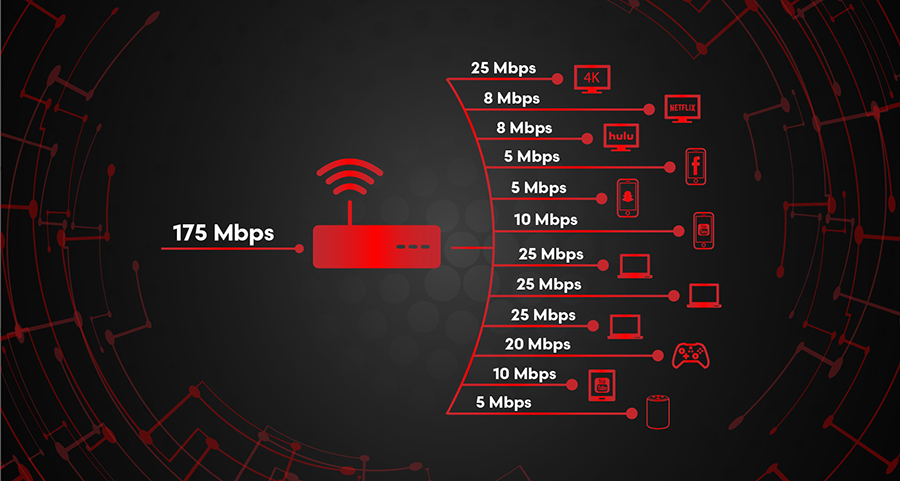When it comes to the Internet, it is all about speed. Whether you are streaming your favorite shows or just surfing the Internet, you want the best performance. The average household in the United States has ten connected devices and that number is expected to increase to 50 connected devices by 2020. Adding more devices can place a strain on your existing network.
That’s why it is no surprise that in the past year, 37 percent of households reported that their Wi-Fi network seems slow. Many people think that adding more bandwidth is the solution to every issue, but that is not always the case. Wireless technology is complicated. There are many factors that can affect the performance of your Wi-Fi network.

Many people think that Wi-Fi and Internet access are the same thing, but they are not. Internet access gives you the connection and a set amount of speed, usually measured in megabits per second (Mbps). Wi-Fi is a radio signal that is used to distribute that connection and speed to all of your devices. Wi-Fi allows your devices to connect to the Internet and to each other without the use of wires or cables.
There are two main pieces of equipment that are needed to make your Wi-Fi work:
Most often, the modem is provided by your Internet service provider, while the router is something that you purchase separately. There are some products that combine a modem and router into one device. Most D & P Connect customers have a 2-in-1 router that delivers Wi-Fi to their home and allows our technical support team to provide technical support 24/7. However, some of our legacy customers still have two pieces of equipment.
If you want to troubleshoot issues with Wi-Fi performance, it is helpful to look at all of the devices and technology involved in your network. Looking at each component individually can help to isolate the issue and get to the root of the problem.

There are four main factors that can affect Wi-Fi performance:
All of these factors combined can have an impact on your wireless network speed. It involves a lot more than just the speed package you have.
Many people use a speed test website to test their network performance. But are speed tests an accurate way to measure performance? The answer is no. The speed test only tests the speed at which the device used is able to access the Wi-Fi network. You might see different results on a speed test at different times of day, depending on what other devices are in use and how many users are on the larger network. The age and capability of the device you use to run the speed test can also affect the results, as well as the overall radio frequency environment in your home.
Our D&P technicians often perform speed tests directly from the modem to determine whether customers are getting their full bandwidth, but the full picture of network performance cannot be understood without considering the particular devices, user consumption patterns, and radio frequency environment.

In short, a speed test can be a useful tool, but it is not always an accurate measure of the overall bandwidth in your home. If you notice a variation between your speed test and your bandwidth, you might want to investigate some of the factors that can affect the results.
While Wi-Fi comes with its own unique set of challenges, it is important to keep in mind all of the ways it makes our lives easier. It may take some time and effort to get to the root of the problem and get your Wi-Fi network humming, but in the end, it will be worth it!